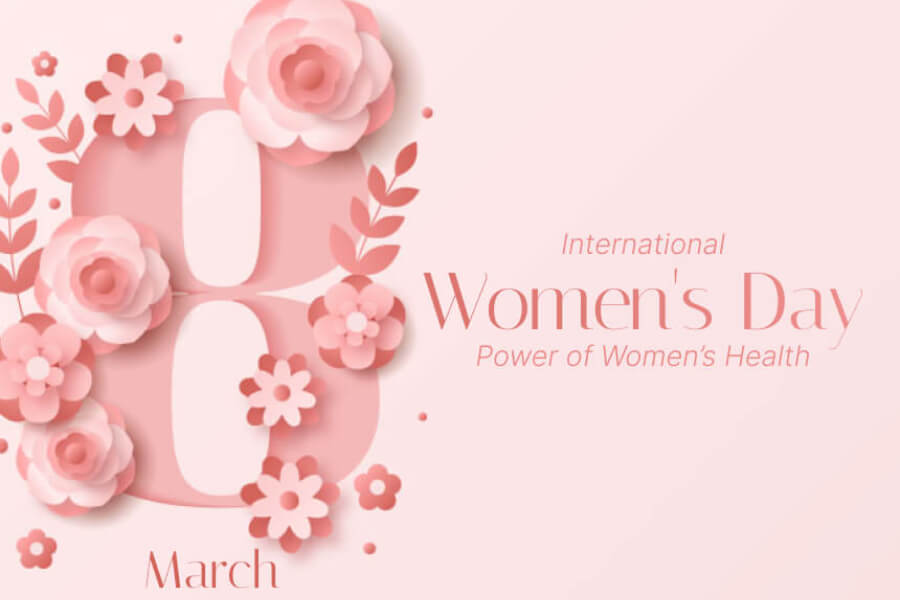International Women’s Day (IWD) is a global celebration of women’s achievements, progress, and the ongoing fight for gender equality.
This year’s theme, “Imagine a gender equal world,” encourages us to envision a future where women have equal opportunities and rights. Let’s delve into the power of women’s health and how we can champion their well-being.
Why Women’s Health Matters
The health gap between genders persists, presenting women with unique challenges ranging from accessing preventive care to being aware of specific health issues.
These obstacles don’t just affect individuals; they have far-reaching consequences for families, communities, and even national economies.
However, there’s promising news: prioritizing women’s health presents a significant opportunity for progress!
Empowering women with knowledge and ensuring access to high-quality healthcare can spark a wave of positive transformations.
A Call to Support Women’s Health
As we attend International Women’s Day, there are numerous ways to honor the importance of women’s health:
Educate Yourself and Others: Take the time to research prevalent women’s health issues and share your knowledge with others. Organizations such as the Office on Women’s Health, part of the U.S. Department of Health and Human Services, provide valuable resources for education (https://www.womenshealth.gov/).
Advocate for Change: Stand behind organizations dedicated to closing the gender health gap. Use your voice to advocate for policies that ensure affordable and accessible healthcare for all women.
Prioritize Your Own Well-being: Make a commitment to regular checkups with your healthcare provider. Familiarize yourself with your family’s health history and any potential risks. Embrace healthy lifestyle habits, including nutritious eating and regular exercise.
By taking these steps, we can collectively work towards closing the gender health gap and fostering a healthier, more equitable future for all.
The WHO underscores the importance of addressing gender inequality in health to ensure that women can enjoy the right to health
The Power of Women’s Health
Women may face some problems, here’s how can you take her of it:
CBD and Women’s Wellness
Women face unique health challenges, from hormonal fluctuations to stress management. CBD (cannabidiol) has gained attention for its potential benefits:
Stress Relief: CBD may help reduce anxiety and stress, promoting overall well-being.
Pain Management: Women dealing with chronic pain conditions can explore CBD as a natural option.
Strengthening the Immune System
A robust immune system is crucial for women’s health. Consider:
Nutrition: Encourage a balanced diet rich in vitamins, minerals, and antioxidants.
Physical Activity: Regular exercise supports immune function.
Managing Diabetes
Diabetes affects millions of women worldwide. Empower them with knowledge:
Healthy Eating: Balanced meals and portion control are essential.
Regular Monitoring: Regular blood sugar checks and medication adherence.
Breaking Stereotypes
Stereotypes limit women’s potential. Let’s challenge them:
Women in STEM: Highlight female scientists, engineers, and innovators.
Leadership Roles: Celebrate women breaking barriers in leadership positions.
Gender Equality in Healthcare
Access to Care: Address disparities in healthcare access.
Research Representation: Advocate for more female participation in medical research.
Treatment Bias: Raise awareness about gender bias in diagnosis and treatment.
Celebrating Achievements
Trailblazers: Spotlight women who’ve made significant contributions to health and wellness.
Healthcare Heroes: Feature interviews with female doctors, nurses, and caregivers.
Taking Action
Join IWD Events: Participate in local events or virtual gatherings.
Educate Others: Share this article to spread awareness.
Support Women: Encourage mentorship and empowerment.
Conclusion
Remember, a healthy woman is a powerful woman, and a society that prioritizes women’s health is a society poised to thrive.
Let’s break down barriers, champion change, and unlock the incredible potential that lies within healthy women everywhere.
FAQs
What is International Women’s Day (IWD), and why is it celebrated?
Every year on March 8, the world observes International Women’s Day as a way to honor the political, social, cultural, and economic accomplishments of women. It also acts as a rallying cry for women’s rights and gender equality.
What is the theme for International Women’s Day this year?
Each year, International Women’s Day is marked with a specific theme that highlights a particular aspect of women’s empowerment or gender equality.
Themes in recent years have included #ChooseToChallenge, #EachforEqual, and #PressforProgress. The theme for this year’s International Women’s Day can vary depending on global or local initiatives and priorities.
How can I participate in International Women’s Day events or activities?
There are many ways to get involved in International Women’s Day, both online and in your local community. You can attend events such as panel discussions, workshops, or marches, organize your own event, participate in social media campaigns using relevant hashtags, or simply show support by raising awareness and sharing resources related to women’s rights and gender equality.
What are some key issues facing women today that International Women’s Day seeks to address?
International Women’s Day aims to raise awareness and advocate for action on various issues affecting women globally, including gender-based violence, unequal access to education and healthcare, gender pay gaps, underrepresentation in leadership and decision-making roles, discrimination based on gender identity or sexual orientation, and lack of reproductive rights and healthcare.
How can I support gender equality and women’s empowerment beyond International Women’s Day?
While International Women’s Day is an important moment for reflection and action, supporting gender equality should be an ongoing commitment.
You can support women’s rights and empowerment by promoting inclusive workplaces, challenging gender stereotypes and biases, advocating for policies that promote gender equality, supporting women-owned businesses, and amplifying the voices of women in your personal and professional networks.





